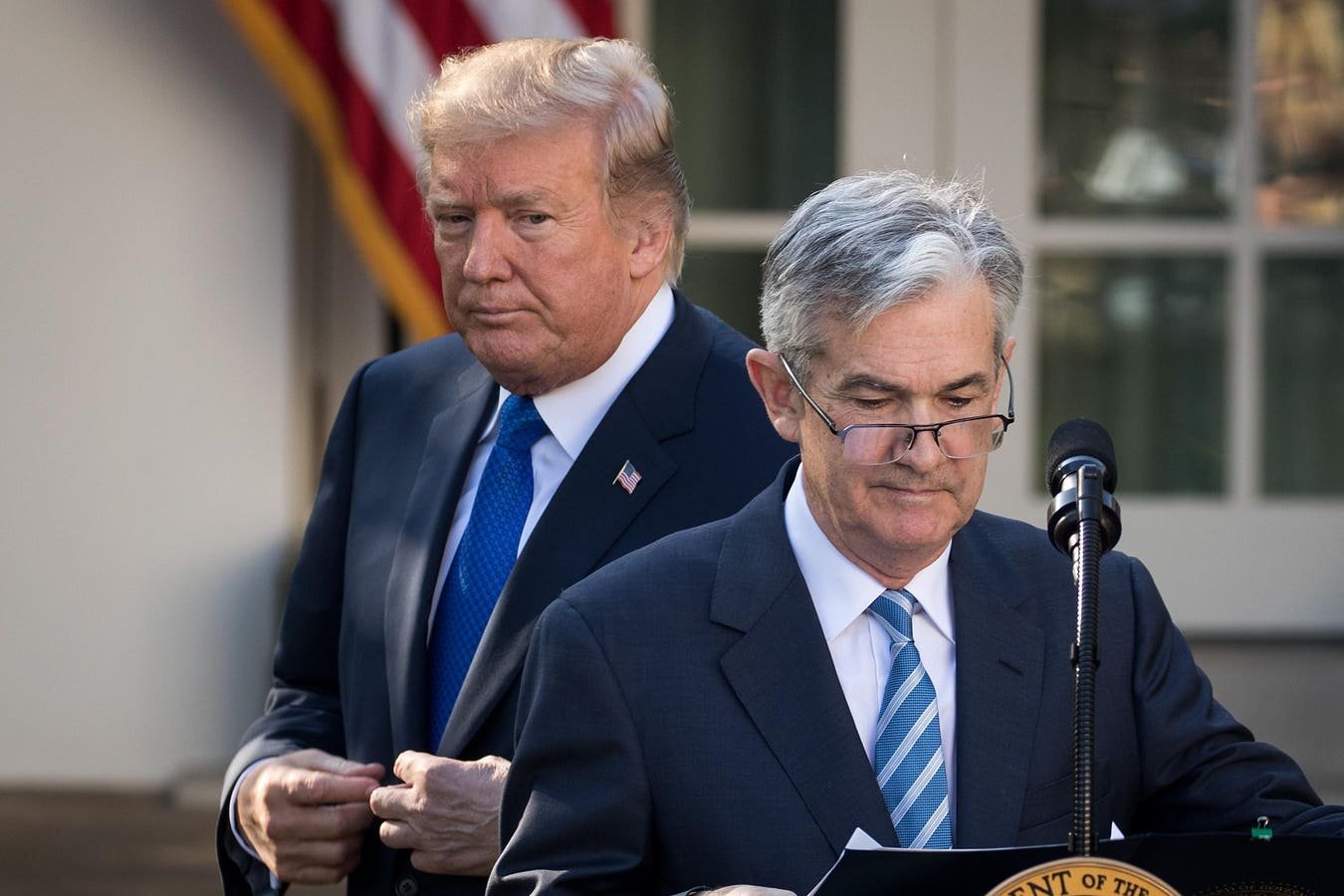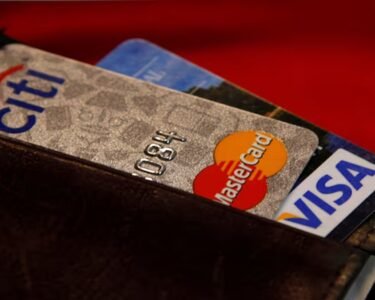Trump nominated Jerome Powell to lead the Federal Reserve in 2017, then quickly turned on him.
Drew Angerer/Getty Images
Angered about interest rates, President Trump lashed out at Federal Reserve Chairman Jerome Powell Thursday, saying the central banker’s “termination cannot come fast enough!” Most presidents try to maintain distance from the Fed, whose leaders pride themselves on independence, but Donald Trump is not most presidents—he’s a billionaire with vast real estate investments.
Hence, the president wants lower interest rates, now and probably forever. The down side of slashing rates is the possibility of boosting inflation, but Trump’s business empire is basically inflation-proof. The higher prices go, the more landlords like the president can charge for rent. Some real estate tycoons, who are actively developing, have to fret over the cost of building materials. Not Trump, who stopped doing ground-up construction years ago. His moves in business, meanwhile, suggest that he has underestimated inflation for years.
Trump appointed Powell in 2017 and has been badgering the Fed chair from the start. In 2018, the president called Secretary of Commerce Wilbur Ross and asked him to have a word with Powell. “I recall him saying, ‘Please call this idiot and explain to him that I will repudiate his nomination, even though it has already been confirmed,’” Ross later explained in a memoir. The former commerce secretary claimed he pushed back but eventually did phone Powell, who cut the call short. “A few weeks later, Powell reversed his policy,” Ross wrote. “I have no idea whether my call helped change his position.”
Trump kept at it the next year, this time applying pressure on his own. “The Fed Rate, over a fairly short period of time, should be reduced by at least 100 basis points,” Trump tweeted in August 2019. Days later, he fired off another message. “Where did I find this guy Jerome?” the president lamented. “Oh well, you can’t win them all!” Then he got more specific. “The USA should always be paying the lowest rate,” Trump said. “It’s only the naivete of Jay Powell and the Federal Reserve that doesn’t allow us to do what other countries are already doing. A once in a lifetime opportunity that we are missing because of ‘Boneheads.’”
The economy did just fine anyway, at least until the pandemic, which led to creeping inflation as Trump left office in January 2021. Back in business, Trump bet that interest rates would stay steady or decline, working with a partner to swap a fixed-rate, $533 million loan against an office complex in San Francisco for a variable-rate, $1.2 billion replacement. It was a risky move, which would leave Trump vulnerable if inflation persisted and the Fed jacked up rates. His partner, the publicly traded firm Vornado Realty Trust, chose to play it somewhat safe, executing a swap that locked in the rate on its 70% share of the loan at 2.26% for three years. But Trump gambled, letting his portion float freely. Sure enough, inflation hung around, the Fed hiked rates, and Trump’s interest expenses at the property more than tripled.
That wasn’t his only mistake. In November 2021, Trump and Vornado refinanced another building, 1290 Avenue of the Americas in New York City, again taking out a variable-rate loan. This time, with inflation raging, both partners apparently protected themselves—but not quite enough. Their initial hedging instrument expired in November 2023, so Trump and Vornado had to shell out $63 million on what amounted to a two-year insurance policy against rising rates.
The common theme in both situations: Trump apparently underestimated inflation—and the high interest rates that tend to come with it. There were some instances in which he played things well, refinancing loans at relatively low, fixed rates against Trump Tower and Trump National Doral in 2022. But he bungled the biggest loans in his portfolio, resulting in $645 million of variable-rate debt, about twice the amount he carried in his first term. The only bit of good news for Trump: He is a limited partner in the Vornado deals, so he would not be personally liable in the event of a default.
Still, given that the interest payments cut into his profits, it’s little surprise that the president is now pressuring the Fed to drop rates again. A 1% decrease could theoretically save him more than $6 million of interest expenses per year. Are Trump’s comments about Powell an indication that he might actually try to fire the Fed chair—a legally questionable move—or just another pressure tactic? Either way, Trump will eventually be able to ditch Powell, whose time as chairman of the Fed runs out in May 2026 and whose term on the board of governors expires January 31, 2028.
Later in 2028, the loans against the two office buildings in San Francisco and New York, where Trump currently has $645 million of variable-rate debt, will both come due. Expect the president to look for a Fed replacement who will be more willing to push down rates.




